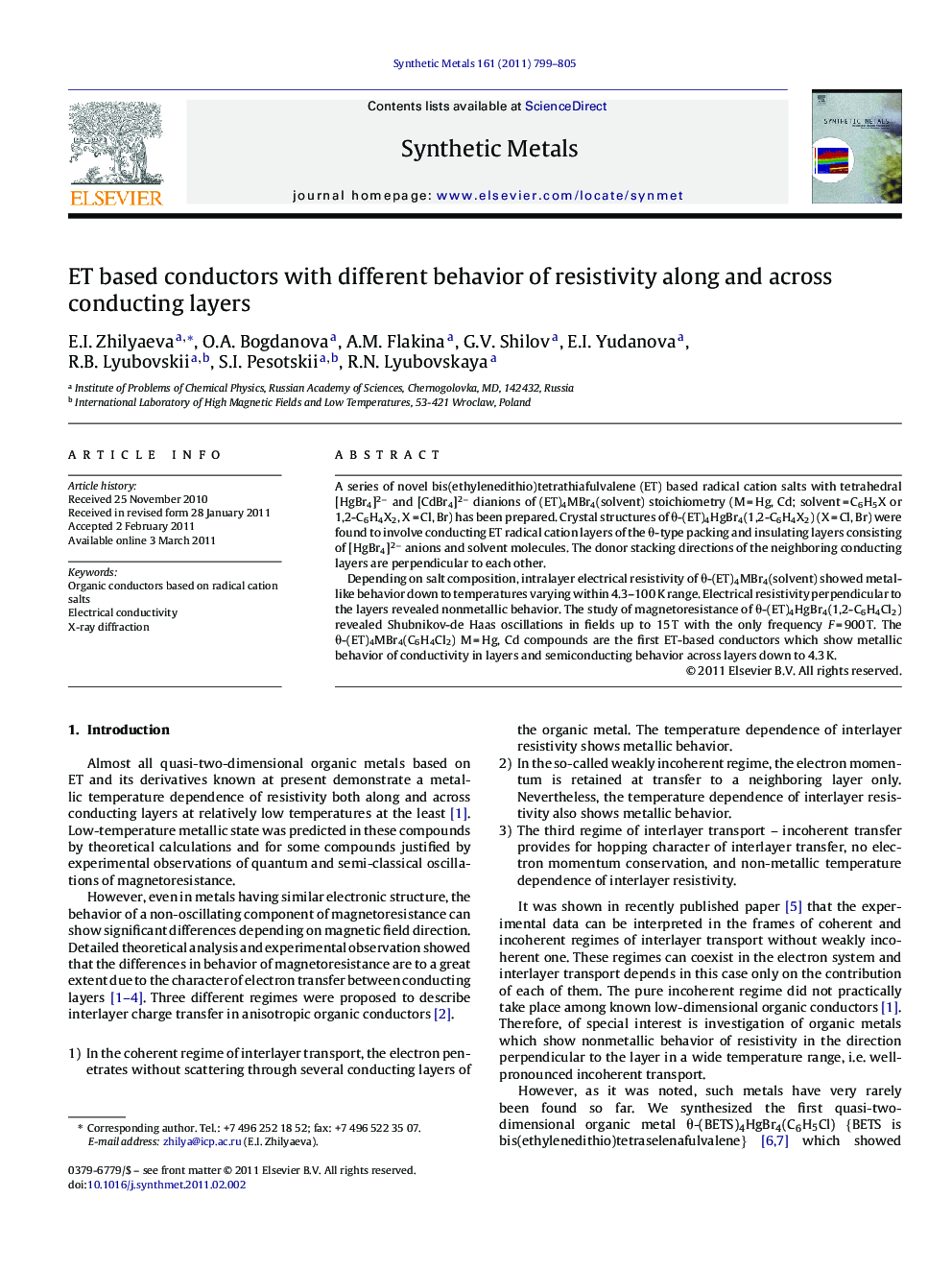| Article ID | Journal | Published Year | Pages | File Type |
|---|---|---|---|---|
| 1442065 | Synthetic Metals | 2011 | 7 Pages |
A series of novel bis(ethylenedithio)tetrathiafulvalene (ET) based radical cation salts with tetrahedral [HgBr4]2− and [CdBr4]2− dianions of (ET)4MBr4(solvent) stoichiometry (M = Hg, Cd; solvent = C6H5X or 1,2-C6H4X2, X = Cl, Br) has been prepared. Crystal structures of θ-(ET)4HgBr4(1,2-C6H4X2) (X = Cl, Br) were found to involve conducting ET radical cation layers of the θ-type packing and insulating layers consisting of [HgBr4]2− anions and solvent molecules. The donor stacking directions of the neighboring conducting layers are perpendicular to each other.Depending on salt composition, intralayer electrical resistivity of θ-(ET)4MBr4(solvent) showed metal-like behavior down to temperatures varying within 4.3–100 K range. Electrical resistivity perpendicular to the layers revealed nonmetallic behavior. The study of magnetoresistance of θ-(ET)4HgBr4(1,2-C6H4Cl2) revealed Shubnikov-de Haas oscillations in fields up to 15 T with the only frequency F = 900 T. The θ-(ET)4MBr4(C6H4Cl2) M = Hg, Cd compounds are the first ET-based conductors which show metallic behavior of conductivity in layers and semiconducting behavior across layers down to 4.3 K.
Graphical abstractFigure optionsDownload full-size imageDownload as PowerPoint slideResearch highlights► (ET)4MBr4(solvent), M = Hg, Cd, layered organic conductors with tetrahedral dianions. ► Metallic resistivity behavior in conducting layers and nonmetallic one across them. ► (ET)4MBr4·C6H4Cl2 are the first ET-based conductors with such behavior at 300–4.3 K. ► Crystal structure is specified by different stacking directions in neighboring layers.
